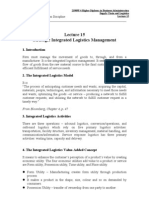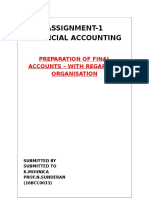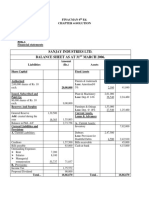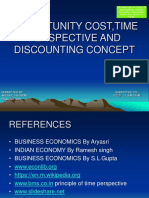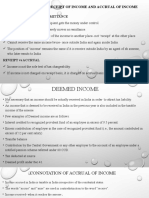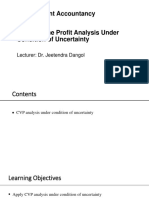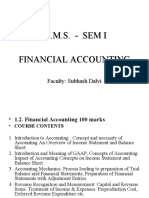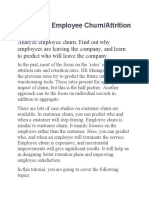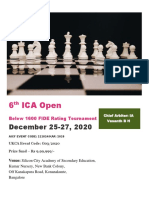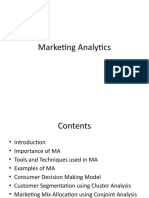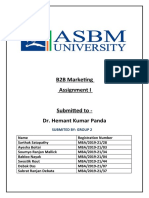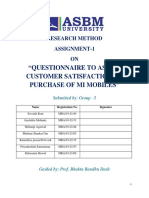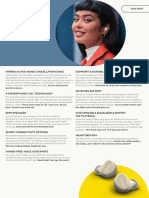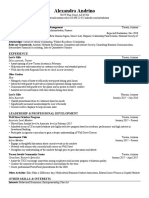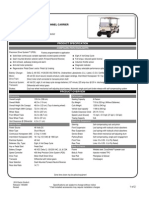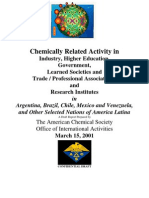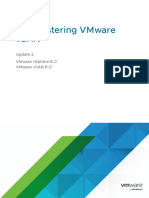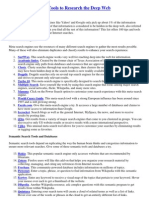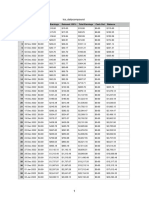COST AND MANAGEMENT ACCOUNTING
ASSIGNMENT-1
ON
“STATEMENT OF COST AND
QUOTATION PRICING’’
Submitted by: Group –5
Name Registration No. Signature
Swostik Rout MBA/19-21/44
Jayalalita Mohanty MBA/19-21/13
Shibangi Agarwal MBA/19-21/48
Bhabani Shankar Das MBA/19-21/05
Kamakhya prasad Dwivedi MBA/19-21/15
Priyadarshini Samantaray MBA/19-21/53
Debasmita Biswal MBA/19-21/08
Guided by: Dr. Padmanava Mohapatra
1
� CONTENTS
Sl. No. Topic Page No.
1 Introduction 3-4
2 Objective 5
3 Situation Analysis 5
4 Statement of Cost 6-8
5 Conclusion 9
7 Bibliography 9
CONTENTS FOR TABLES
Sl. No. Topic Page No.
1 Statement of cost (January 2019) – 400 units 6
2 Statement of cost (December 2018) – 190 units 7
3 Cost structure for Dec 2018 & Jan 2019 8
2
�1. INTRODUCTION
Accounting or accountancy is the measurement, processing, and communication of
financial and non-financial information about economic entities such
as businesses and corporations. Accounting, this has been called the “language of
business”.
Accounting can be divided into several fields namely:
Financial Accounting
Management Accounting
External Auditing
Tax Accounting
Cost Accounting
1.1. Cost Accounting
Cost accounting deals with the calculation and assessment of costs and expenses to
purchase or produce something. It relates to calculation per unit cost using different
costing techniques. Its primary purpose is to facilitate managers in decision making.
The main activities of cost accounting are:
Budgeting: In cost accounting, various budgets are prepared, showing cost, revenue,
profit, production capacity and efficiency of plant and machinery, as well as the
efficiency of workers. The budget is planned in a scientific and systematic way that
is often unique to the company, as reports are not bound to the principles of
Generally Accepted Accounting Principles (GAAP).
Classify and break down costs for external reporting and internal profit
measurement: Since costs are calculated on a detailed level, identifying profitable
and unprofitable items or activities becomes easy.
Determine the fees or prices for goods and services: In tough market conditions or
in slump periods, costing helps to determine the selling price of the product at the
optimum level to be competitive.
3
�1.2. Management accounting
Management accounting relates to the provision of appropriate information for
decision-making, planning, cost control and performance evaluation. Management
accounting turns data into information, knowledge, and wisdom about a business
entity’s operations. This is one step further than cost accounting. Management
accounting works to know the reasons of profit or loss and studies the factors which
influence efficiency to assist in decision making. Therefore, cause and effect is an
important feature of management accounting. The Various advantages of management
accounting are as follows:
Reporting to management: It is the primary role of management accounting to
inform and advise the management about the latest position of the company. It
covers information about the performance of various departments on regular basis to
the management which is helpful in taking timely decisions especially to overcome
any existing financial or other problems of an organization.
Aid in decision-making: The success of any organization depends upon accurate
effective decision-making, which is in turn based on informational networks as
provided by management accounting. Applying techniques of differential costing,
absorption costing, marginal costing, and management accounting provides useful
data to the management to aid in their decision-making.
Controlling performance: In order to assure effective control, various techniques are
used by a management accountant such as budgetary control, standard costing,
management audit, etc. Management accounting provides a proper management
control system to the management. Reports are provided to the management
regarding the effective and efficient use of resources.
Interpreting financial statements: Collecting and analysing accounting data is a key
role of management accounting. This provides relevant information in a systematic
way that can be used by the management in planning and decision-making. Cash
flow, fund flow, ratio analysis, trend analysis, and comparative financial statements
are the tools normally used in management accounting to interpret and analyse
accounting data.
4
�2. OBJECTIVE
The Main objectives of this assignment are:
To learn ascertainment of cost of a product keeping in view the past of previous
month.
To implement cost accounting in planning and decision making.
3. SITUATION ANALYSIS
BSD Sports is a manufacturing unit of manufacturing premium cricket ball. The
quotation for 100 units of balls is processed after taking last year’s cost record in
certain changes in cost.
There is no change in the rate of Leather. The cost of leather per meter remains to
be same RS. 750.
The wages of skilled labour and helpers are the same.
The cost of cork and Thread are remaining the same.
Job processing costs include polishing charges is same as last year.
The salary of supervisor and watchmen remain same.
The charges for rent and power remain the same.
The advertisement cost remains same.
The total cost is accessed to be
The profit figure is 160000 as the order price is set at 960000
5
�4. STATEMENT OF COST
The statement of cost for the month of January 2019 (for producing 400 units) and for the
month of December 2018 (for producing 190 units) is mentioned below.
Statement of cost (January 2019 ) – 400 units
Elements of Cost Amount Amount
(Rs.) per unit (Rs.)
Opening Stock of Materials - -
300,000 750
Add: Purchases of Materials
- -
Less: Closing stock of Materials
Raw Material Consumed 300,000 750
Add: Direct Labour 1,08,000 270
Add: Direct Expenses 45,000 112.5
Prime Cost 4,53,000 1132.5
Add: Factory Overheads 7800 19.5
Works Cost 460800 1152
Add: Office Overheads 45,000 112.5
Cost of Production 5,05,800 1264.5
Add: S&D Overheads 294200 735.5
Cost of Sales/TC 800000 2000
Add: Profit 160000 400
Sale 960000 2400
Table-1: Statement of cost (January 2019) – 400 units
6
� Statement of cost ( December 2018 ) – 190 units
Elements of Cost Amount Amount
(Rs.) per unit (Rs.)
Opening Stock of Materials 750 3.95
Add: Purchases of Materials 1,42,500 750
- -
Less: Closing stock of Materials
Raw Material Consumed 143250 753.95
Add: Direct Labour 75,000 394.73
Add: Direct Expenses 45,000 236.84
Prime Cost 263250 1385.52
Add: Factory Overheads 3380 17.78
Works Cost 266630 1403.3
Add: Office Overheads 60000 315.78
Cost of Production 326630 1719.1
Add: S&D Overheads 173370 912
Cost of Sales/TC 500000 2631.9
Add: Profit (20% of Cost of Sales) 100000 526.38
Sale 600000 3157.89
Table-2: Statement of cost (December 2018) – 190 units
7
� The table given below enlists the comparative view of the cost for producing
premium cricket balls for the month of Dec 2018 and Jan 2019 respectively.
Cost Structure
Particulars Units Rate Amount Units Rate Amount
(Rs.) (Rs.) (Rs.)
(Dec 2018) (Jan 2019)
Leather(m) 190 750 1,42,500 400 750 3,00,000
Skilled 5 9000 45,000 8 9,000 72,000
worker
Helper 5 6,000 30,000 6 6,000 36,000
Travelling 1 15,00 15,000 1 15,000 15,000
Job 1 15,000 15,000 1 15,000 15,000
processing
Cork 190 2 380 400 2 800
Thread(F) 300 10 3,000 700 10 7,000
Supervisor 1 27,000 27,000 1 27,000 27,000
Watchman 1 18,000 18,000 1 18,000 18,000
Rent 1 30,000 30,000 1 30,000 30,000
Lighting & 1 30,000 30,000 1 30000 30,000
Power
Advertisement 1 15,000 15,000 1 15,000 15,000
Total 3,70,880 1 5,65,800
Table-3: Cost structure for Dec 2018 & Jan 2019
8
�5. CONCLUSION
After completion of the assignment we understood that cost accounting provides data to
management for decision making and budgeting for the future. It also helps in establishing
certain standard costs and budgets. By comparing the two year’s statement of cost we
found that when the company produces more the product cost will be less. This justifies
the economies of scale.
6. BIBLIOGRAPHY
https://en.wikipedia.org/wiki/Cost_accounting
https://www.investopedia.com/terms/c/cost-accounting.asp















